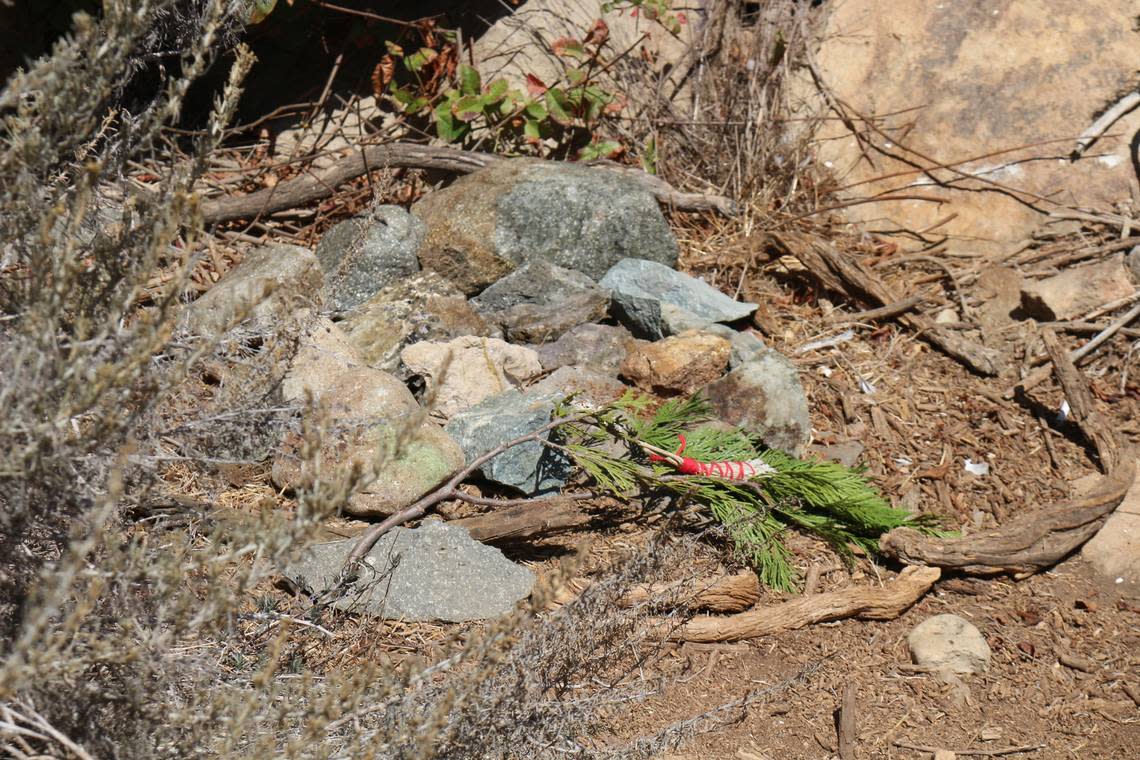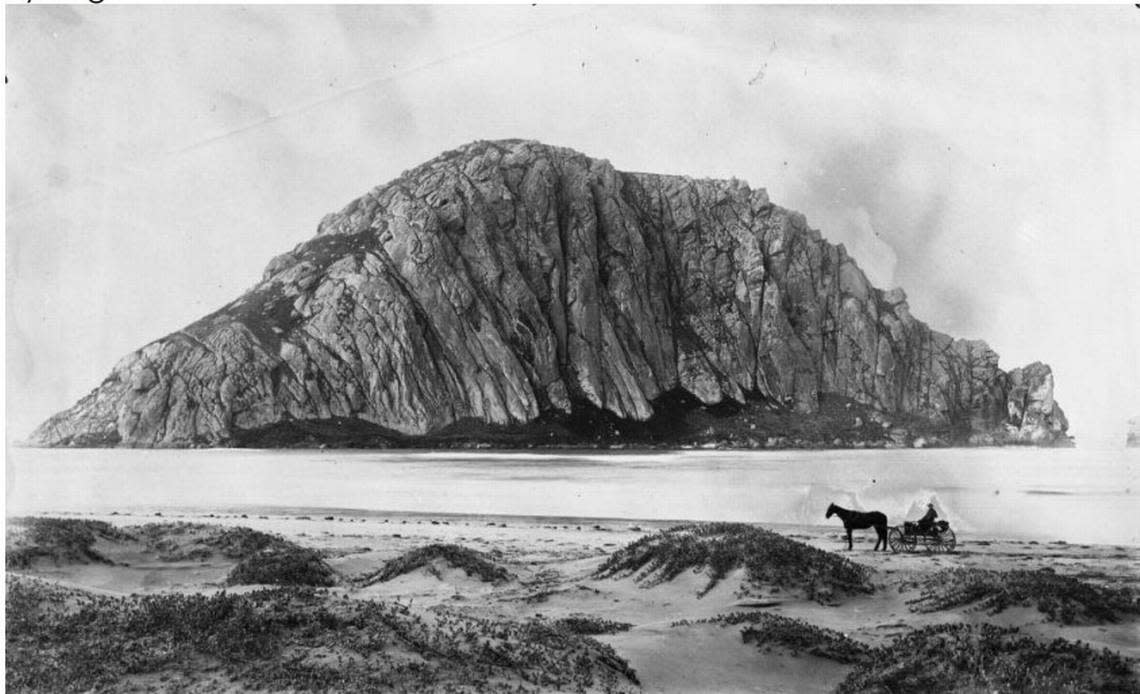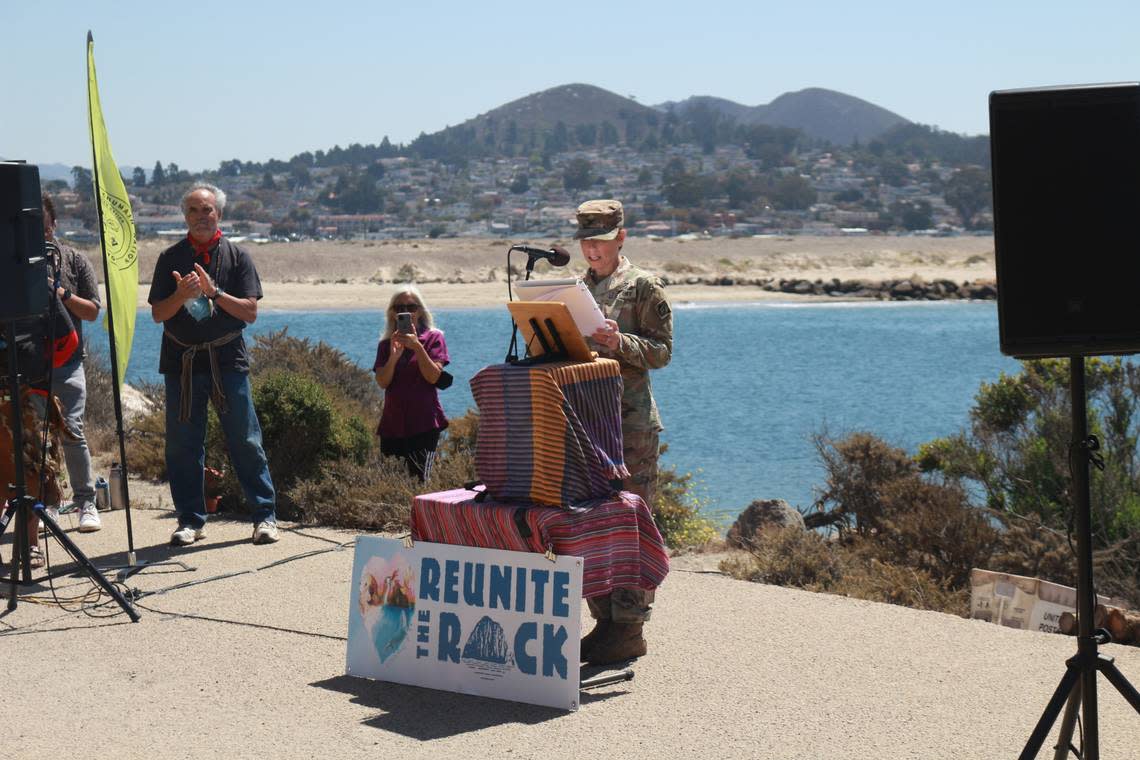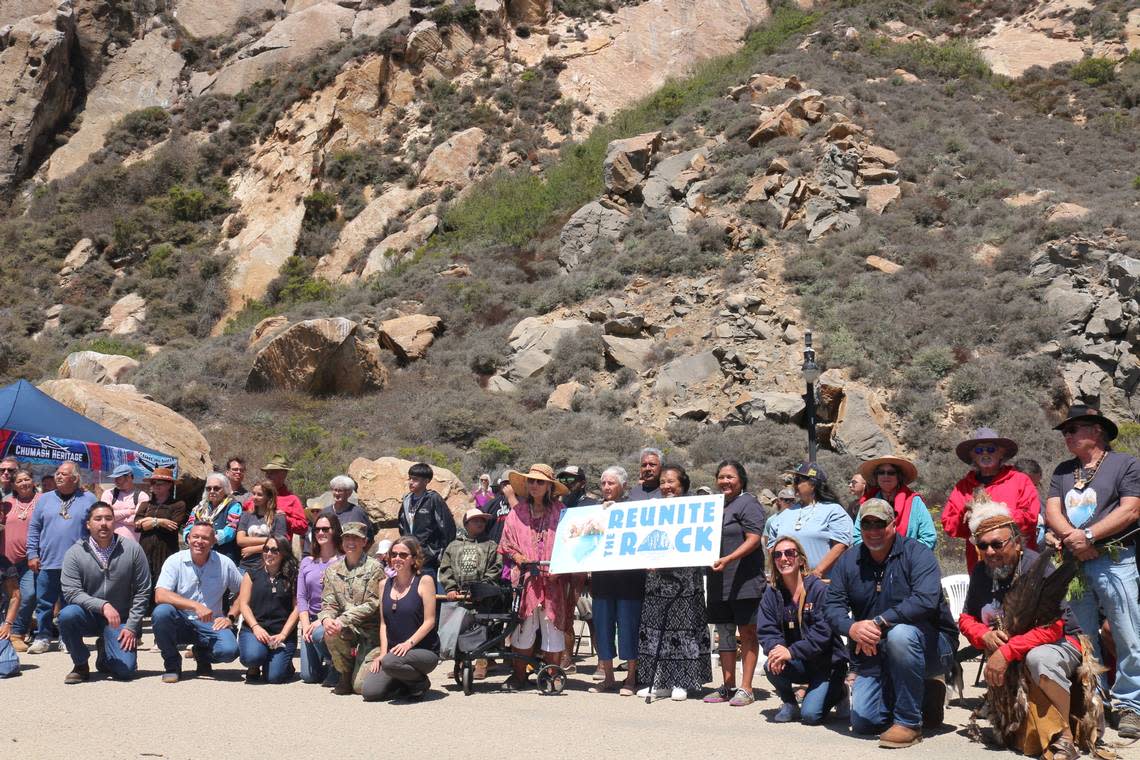Northern Chumash celebrate as pieces of Morro Rock are ‘reunified’ with sacred landmark
Forming a human line from the mouth of Morro Bay up to Morro Rock, dozens of people passed rocks up from a Northern Chumash tomol boat on a sunny Saturday morning.
As some in the crowd softly sang traditional Native American songs, those at the end of the line placed the rocks in a neat pile at the base of the towering volcanic plug along San Luis Obispo County’s coast.
It was part of a ceremony celebrating the “reunification” of Morro Rock, or Lisamu’. The rocks were from the Port San Luis breakwater, about 15 miles down the coast, which were quarried from Morro Rock beginning in the late 1880s.
“Lisamu’ is finally coming home,” said U.S. Army Corps of Engineers Col. Julie Balten, at the ceremony.
“These fragments of rock represent our fragmented people,” said Mia Lopez, chair of the Coastal Band of the Chumash Nation. “As we heal this rock, it gives us the opportunity to heal ourselves and our communities as well.”

About 200 people had gathered Saturday morning to celebrate the U.S. Corps of Engineers relocating up to 10,000 tons, or 20 million pounds, of Port San Luis breakwater stone to an area about 1,500 feet west of Morro Rock in the Pacific Ocean.
The effort came after several years of advocacy by the Northern Chumash Tribal Council, originally led by Fred Collins and now by his daughter, Violet Sage Walker.
The California Coastal Commission approved the work by the Corps of Engineers in May. Relocating the stones, each up to about 10 tons, is expected to last until October.

The stones are set to be placed in an area encompassing about three acres of sandy seafloor and stacked up to 13 feet high. Boats will still be able to travel over the area, as the rocks won’t reach above about 40 feet below sea level.
The rock pile created by the dropped Morro Rock stones may provide refuge for some reef-oriented species, according to the Coastal Commission. Although the Corps of Engineers noted in its permit that the environmental benefits come second to the cultural importance of the project.
“Lisamu’ has been a place of spiritual significance for the Chumash for thousands of years, bringing life and food for our people,” said Violet Sage Walker, Northern Chumash Tribal Council Chairwoman, in a prepared statement. “The reunification of Lisamu’ represents a healing of our people and our culture — a healing that is long overdue.”


